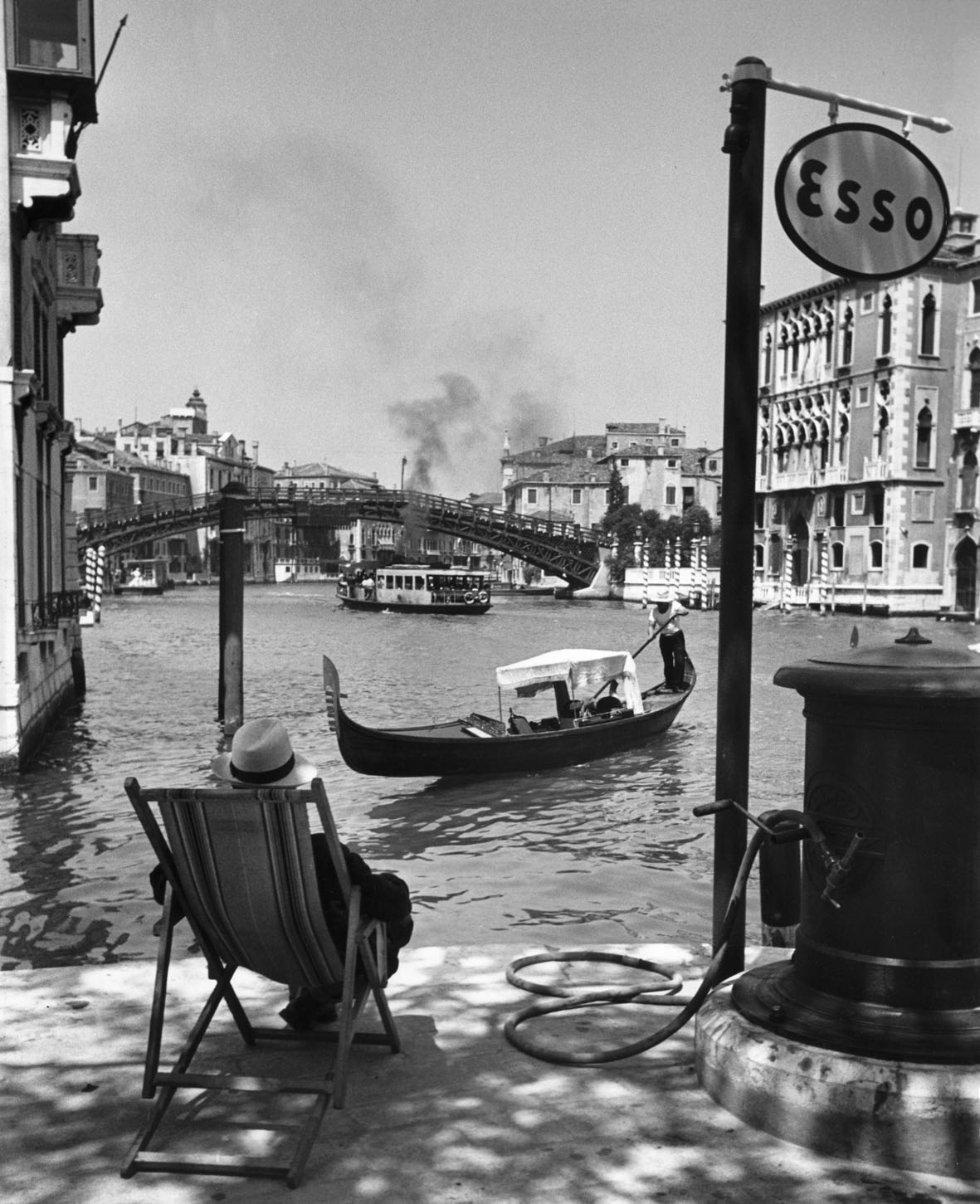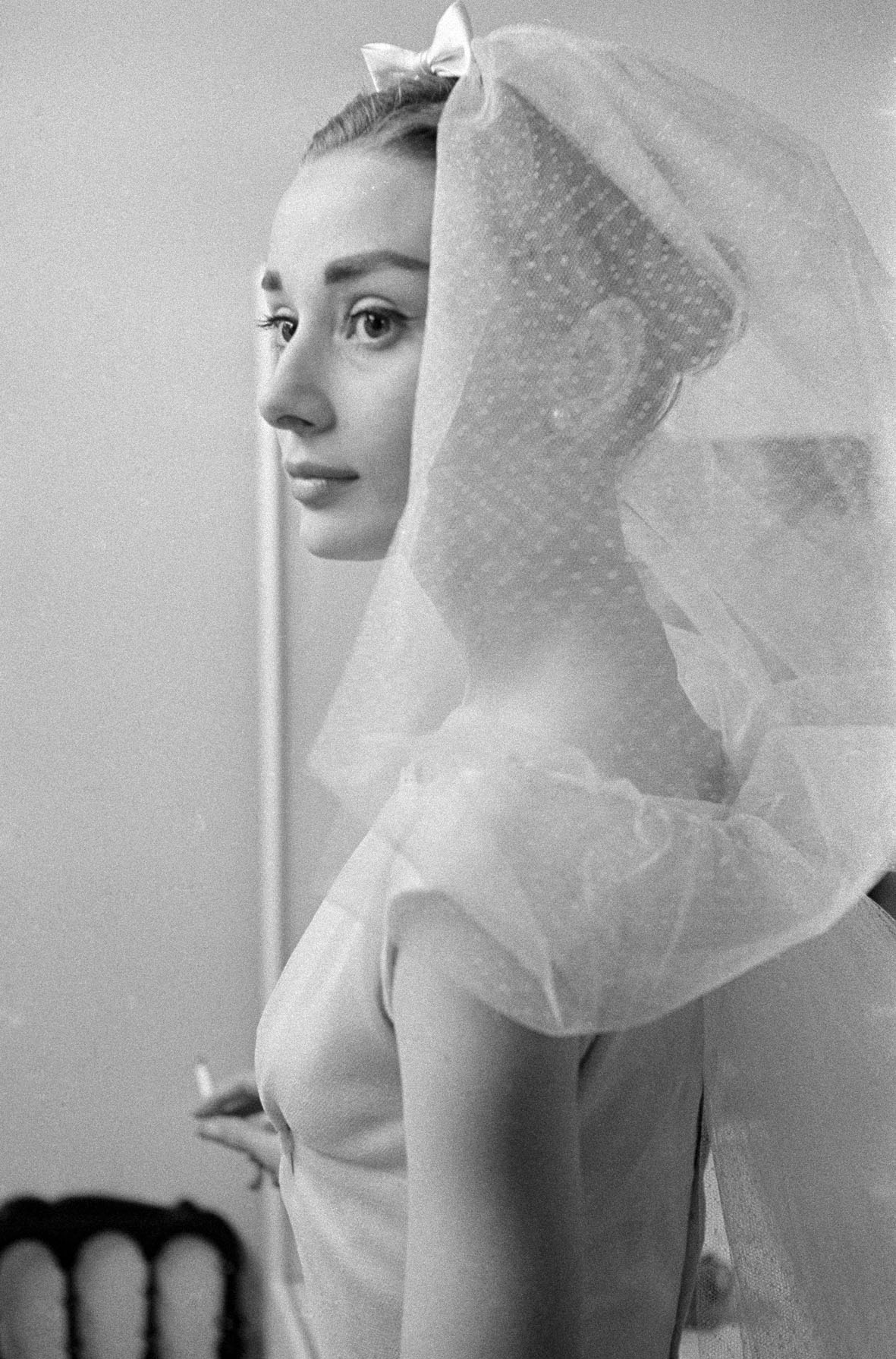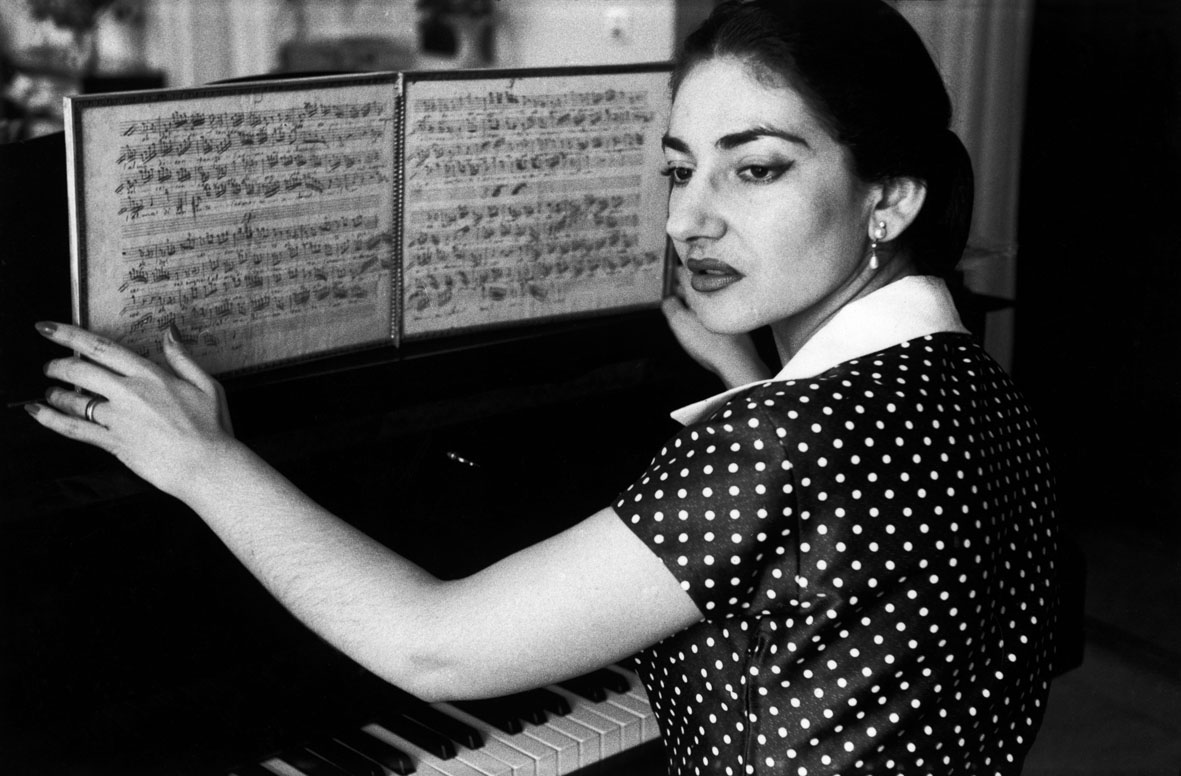
Venice, Italy, 1950 © David Seymour/Magnum Photos
Have you ever wondered who is the creator of the famous photograph taken in Venice, the one showing in an almost surreal way a gondolier arriving at an ‘Esso’ filling station on the Grand Canal?
This iconic work was taken by David Seymour, also known as ‘Chim’, back in 1950.
This image is part of a larger project that Seymour dedicated to post-war and reconstruction Europe, full of stories to tell. The life and works of David Seymour offer a fascinating look at the 20th century, through the eyes of a man who lived and documented some of the most significant moments in recent history.
In this post, I want you to discover Seymour, a man whose lens captured as much the beauty as the tragedies of his time.
Life and works of David Seymour: master of photography and chronicler of the 20th century

Audrey Hepburn, 1956 © David Seymour/Magnum Photos
The famous photo of the gondolier in Venice is just one of the many images David Seymour captured during his stay in the lagoon city. His reportage on Venice was characterised by meticulous attention and subtle irony, capturing the daily life and unique aspects of the city.
His photographs are not only artistically relevant, but also represent a historical document of post-war Venice.
THE BEGINNING OF DAVID SEYMOUR’S CAREER
David Seymour, born David Szymin in 1911 in Warsaw, came from a family of publishers specialising in Yiddish and Hebrew works. His family temporarily moved to Russia during the First World War, only to return to Warsaw in 1919.
After studying printing in Leipzig and chemistry and physics at the Sorbonne in the 1930s, Szymin chose to stay in Paris. Here, thanks to the loan of a camera from David Rappaport, a family friend and owner of the Rap photo agency, Seymour began his journey into the world of photography.
His early work was influenced by Brassaï’s 1932 book ‘Paris de Nuit’ and soon Seymour began working as a freelance photographer, publishing in magazines such as Paris-Soir and Regards.
SEYMOUR WITNESS TO HISTORY: FROM PARIS TO NEW YORK
From 1936 to 1938, Seymour documented the events of the Spanish Civil War, the same war that made the famous photographer Robert Capa famous with one of his shots.
After the war, he moved to Mexico with a group of Spanish Republican emigrants and, with the outbreak of World War II, moved to New York, adopting the name David Seymour.
His parents were unfortunately killed by the Nazis and he himself served in the US Army during the war, receiving a merit badge for his work in intelligence.
MAGNUM PHOTOS AND COMMITMENT TO UNICEF
In 1947, together with photographers such as Cartier-Bresson, Robert Capa, George Rodger and William Vandivert, Seymour founded the Magnum Photos agency in New York. The following year, UNICEF commissioned him to photograph European children affected by war.
This period was marked by important photographic work that included major events in Europe, Hollywood stars and the birth of the State of Israel.

Maria Callas, Rome, Italy, 1956 © David Seymour/Magnum Photos
THE TRAGIC END OF A GREAT PHOTOGRAPHER
After the death of Robert Capa in 1954, Seymour became president of Magnum Photos and held this position until 10 November 1956, when, while near the Suez Canal to document a prisoner exchange, he was tragically killed by Egyptian machine-gun fire.
The life and works of David Seymour are not only a significant chapter in the history of photography, but also a valuable document of crucial historical moments of the 20th century, captured through the lens of a true master.

